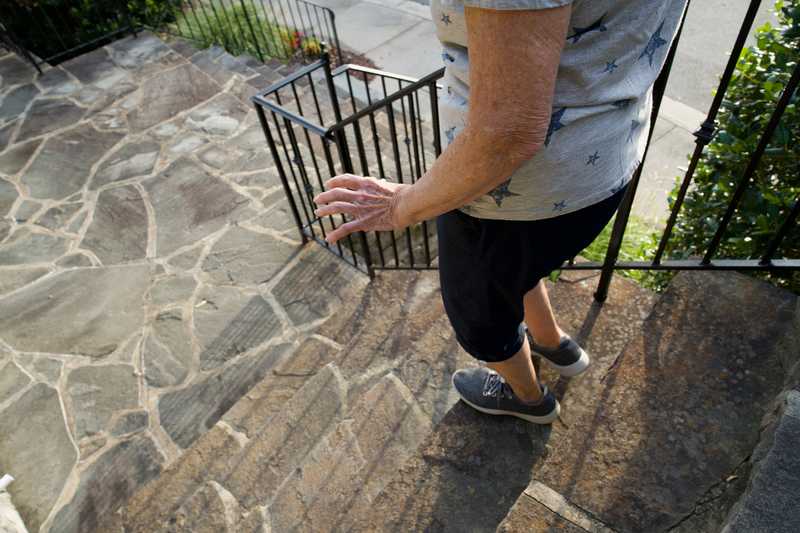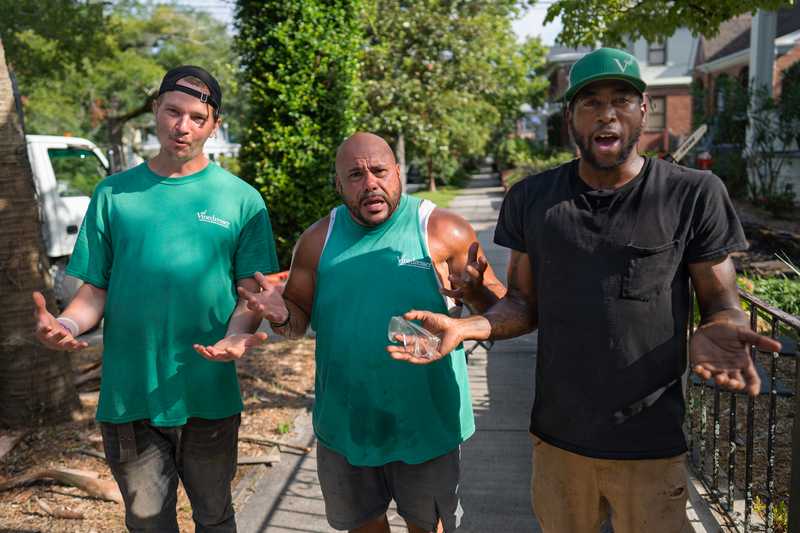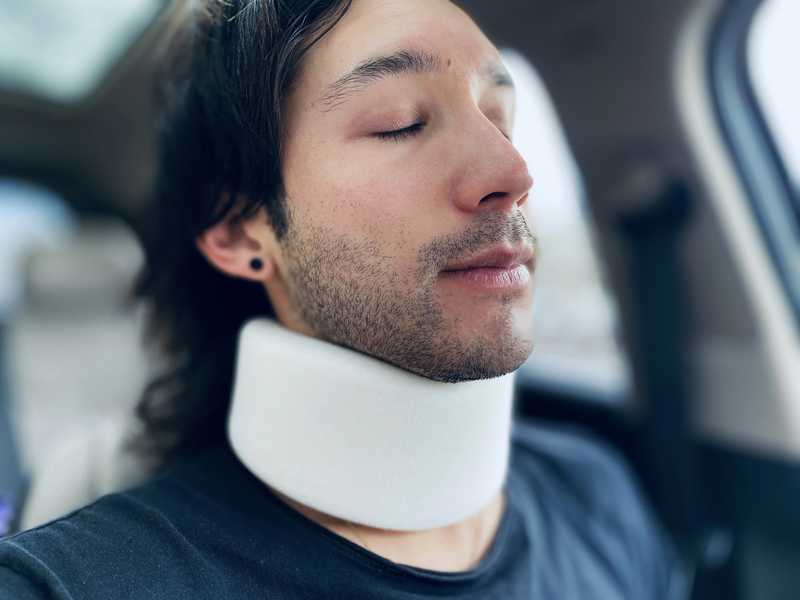It can happen to anyone at any time, but the fear of falling increases as we age. I am sure you've heard of a friend or family member who was injured by a fall. The CDC reports that every year 36 million falls occur in older adults.1 Surprisingly, less than half tell their doctor.2
Falls are becoming more common with a 30% rise in the past decade.3 Keep reading to learn how you can reduce your risk of falling.
Table of Contents
- The Vestibular System
- The Visual System
- The Somatosensory System
- System Integration
- Balance Reactions
- Use It Or Lose It!
Experiencing a fall shakes our confidence and comes with a high cost to society. Treatments for falls cost more than $50 billion in 2015.4 As a result, fall prevention is now a component of the Medicare Part B Merit-based Incentive Payment System (MIPS).5 This incentive is to encourage healthcare providers to measure and ask about falls more regularly.
Falls happen when we lose our balance and are unable to appropriately react to keep ourselves off the ground. To keep ourselves upright in space and prevent falls, we have 3 systems that all communicate and interact:
- Vestibular system
- Visual system
- Somatosensory system
Let's talk about each system and how they influence our balance.
The Vestibular System
The vestibular system is also known as our inner ear. We have a left and a right ear; therefore, we have a left and right inner ear. You cannot see your inner ears by shining a light into your ear canals because they are actually inside your skull. Thus, this system is surrounded by another layer of bone.
There are 2 major parts of the vestibular system:
- Semicircular canals
- Vestibule
There are 3 semicircular canals in each of the inner ears that look like loops, and they sense rotational movements. These canals are filled with fluid and have hair cells in them that act like seaweed. When the fluid moves in the canal, it will move the seaweed-like hair cells and this sends a message up to our brain to let us know we have moved our head. Our brain will then communicate with our eyes to 'catch up' with our head to allow us to know where we are in space.
The vestibule is at the base of the semicircular canals and is the weight of the vestibular system. This part of the vestibular system senses acceleration movements like when you move up and down or back and forth. Think of that feeling you get on an elevator or when you accelerate quickly in the car. The vestibule is where the dense calcium carbonate crystals, known as otoliths6, live on a sticky and gelatinous layer. This is their home and where they want to stay. If the crystals get knocked off of the sticky layer, they end up floating in the fluid within the semicircular canals and this makes us dizzy. This is known at Benign Proxsymal Positional Vertigo or BPPV. Someone might report that the room is spinning and they have no control of the movement. You will see eye movement called nystagmus that indicates BPPV.
The Visual System
Our most heavily relied upon balance system is our eyes. Have you ever closed your eyes in the shower and felt like you had to grab hold of something so you didn't fall? Have you walked into a dark closet and felt extremely disoriented? That's because, when you close your eyes, you are no longer able to use your visual system to determine where you are in space. You then have to rely upon your vestibular system and your somatosenory system to keep yourself upright.
Another way we use our visual system is by being able to focus our gaze on a stationary object. For example, ballerinas use their visual system by focusing on a stationary object every time they turn so that they can keep their balance and not fall. Our visual system gives us so much information to be able to keep us oriented in space.
The Somatosensory System
The somatosensory system is also known as our propriception. These are just fancy words for the receptors of our nervous system in our muscles, joints, and skin. This is why it is harder to walk on sand rather than on concrete. Another example is when you are standing on one leg and say 'I just need one finger to balance.' This is because the receptors in the point of that finger are activated and are able to tell you where you are in space while giving you a point of reference.
These receptors can sense changes in pressure, movement, stretch, pain, touch, and more. These senses are sent back to our brain and, just like our other systems, tell us where we are in space.
The easiest way to stand is with a wide base of support, with our feet shoulder-width apart or wider. As we bring our feet closer and closer together, it gets harder and harder to balance. Therefore, having our heels and toes touching becomes more difficult. If we place one foot in front of the other (tandem), this is even more challenging. The hardest way to stand is on one foot, but having this ability is very important to prevent falls. Walking is repeatedly performing a single leg stance over and over again. The same occurs walking up and down stairs. This can be even more challenging, especially when going down the stairs.
System Integration
The integration and communication between the vestibular, visual, and somatosensory systems results in our ability to balance, maintain postural control, and equilibrium.7 These are all common descriptions used to remain upright and navigate our world safely and avoid falling.
The central nervous system (brain and spinal cord) integrates these systems to maintain our balance, or appropriately react when we lose our balance.
The reflex between the inner ear (vestibular system) and the eyes (visual system) is logically called the vestibulo-ocular reflex (VOR). This system allows us to walk and read signs at the same time. VOR exercises are a common prescription for those where the communication between the inner ear and the eyes is not as strong.8
Interacting with VOR is the cervico-ocular reflex which senses head movement in relation to the rest of our body in space. This often happens as we walk and turn our head when we are walking up and down the grocery aisle.
Balance Reactions
Loss of balance will inevitably happen; we may trip on a rock or walk over a slippery surface. How we react is very important and can keep us from falling. We have 3 different strategies that we use:
- Ankle strategy
- Hip strategy
- Step strategy
If we get a little off-balance, we utilize our ankle strategy by either going up on our toes or back on our heels to keep ourselves upright. Then we may get knocked off-balance even more, requiring us to turn on our hip strategy by bending at our hips to align our center of gravity. Finally, if we get really off-balance, we will have to take a step to keep from falling.
We may only need one of the strategies or all three to keep ourselves from falling. If we do not practice these strategies, then it becomes harder for us to utilize them in the time of need.
Use It Or Lose It!
I often see elderly who are afraid of falling because: they tripped over something, they had a recent surgery or stroke, they have a friend who fell and was seriously injured, or Post-Fall Syndrome (PFS). PFS is a fear of falling after experiencing a significant fall.9
From that point on, they often start holding on to walls, cabinets, and railings whenever walking on unsteady surfaces. Pretty soon they have furniture placed throughout their home so they can hold on when traveling through rooms. We call this "furniture surfing," and often they don't even realize they are doing it. We install nightlights throughout the home and hold our gaze on stationary objects when our balance is challenged. All of these tasks are decreasing the use of our balance systems.
We become less active and avoid our prior level of activity. Long-term exposure to this reduced activity is linked to functional decline.10 Most loss of balance issues can be blamed on sitting and sedentary lifestyle choices. While seated, our balance systems are not being utilized. Loss of use causes loss of function.
How You Can Prevent Falls For Youself Or a Loved One
- Talk about it, reach out, schedule an appointment with a licensed CityPT therapist to develop a fall prevention program directly correlated with your needs.
- A body in motion stays in motion. This goes for our bodies too! Stay active!
- Have regular eye exams to ensure the visual system is working optimally.
- Have routine foot checks to ensure proper sensation and footwear.
- Improve home environments with proper lighting, decrease clutter and throw rugs, install handrails on stairways and grab bars in bathrooms, and utilize obedience training for pets to respect your space when walking.
CityPT: We are experts in fear of falling and fall prevention
CityPT has expert Doctors of Physical Therapy ready right now to help you or your loved one overcome your fear of falling. We're committed to getting you the fastest care possible.
Before you go, please read our disclaimer. This blog is intended for informational purposes only. We are not providing legal or medical advice and this blog does not create a provider-patient relationship. Do not rely on our blog (or any blog) for medical information. Always seek the help of a qualified medical professional who has assessed you and understands your condition.
References
Footnotes
-
Moreland B, Kakara R, Henry A. Trends in Nonfatal Falls and Fall-Related Injuries Among Adults Aged ≥65 Years — United States, 2012–2018. MMWR Morb Mortal Wkly Rep 2020;69:875–881 https://www.cdc.gov/mmwr/volumes/69/wr/mm6927a5.htm#suggestedcitation ↩
-
Important Facts about Falls | Home and Recreational Safety | CDC Injury Center. Published February 10, 2017. Accessed June 20 , 2021. https://www.cdc.gov/falls/facts.html ↩
-
Common injuries as we age. Center for Disease Control and Prevention. Published May 4, 2021. Accessed June 20, 2021. https://www.cdc.gov/stillgoingstrong/about/common-injuries-as-we-age.html ↩
-
Florence CS, Bergen G, Atherly A, Burns E, Stevens J, Drake C. Medical Costs of Fatal and Nonfatal Falls in Older Adults. J Am Geriatr Soc. 2018;66(4):693-698. doi:10.1111/jgs.15304 https://www.ncbi.nlm.nih.gov/pmc/articles/PMC6089380/ ↩
-
Quality ID #154 (NQF: 0101): Falls: Risk Assessment. November 2019. https://qpp.cms.gov/docs/QPP_quality_measure_specifications/Claims-Registry-Measures/2020Measure154MedicarePartBClaims.pdf ↩
-
Timothy C. Hain MD. Anatomy of the Otoliths. Dizziness-and-balance.com. Published July 10, 2021. Accessed June 20, 2021. https://dizziness-and-balance.com/anatomy/ear/otoliths.html. ↩
-
Hansson EE, Beckman A, Håkansson A. Effect of vision, proprioception, and the position of the vestibular organ on postural sway. Acta Oto-Laryngologica. 2010;130(12):1358-1363. doi:10.3109/00016489.2010.498024 https://portal.research.lu.se/ws/files/5263076/1671500.pdf ↩
-
Alghadir AH, Iqbal ZA, Whitney SL. An update on vestibular physical therapy. Journal of the Chinese Medical Association. 2013;76(1):1-8. doi:10.1016/j.jcma.2012.09.003 http://dx.doi.org/10.1016/j.jcma.2012.09.003 ↩
-
Fear of falling. Physiopedia.Published September 25, 2019. Accessed June 20, 2021. https://www.physio-pedia.com/Fear_of_Falling ↩
-
Choi K, Jeon G-S, Cho S-il. Prospective study on the impact of fear of falling on functional decline among community dwelling elderly women. International Journal of Environmental Research and Public Health. 2017;14(5):469. doi:10.3390/ijerph14050469 https://pubmed.ncbi.nlm.nih.gov/28448461/ ↩

Whitney Fitzpatrick is a Doctor of Physical Therapy that specializes in orthopedics, concussions, and pelvic health. She received her Doctorate of Physical Therapy from the University of Colorado Anschutz Medical Campus in 2016. Since then she has focused treatments on areas of pelvic health, aquatic therapy, concussion rehabilitation, emergency response for athletes, dry needling, and telehealth to serve more people, more readily.

Whitney Fitzpatrick is a Doctor of Physical Therapy that specializes in orthopedics, concussions, and pelvic health. She received her Doctorate of Physical Therapy from the University of Colorado Anschutz Medical Campus in 2016. Since then she has focused treatments on areas of pelvic health, aquatic therapy, concussion rehabilitation, emergency response for athletes, dry needling, and telehealth to serve more people, more readily.



